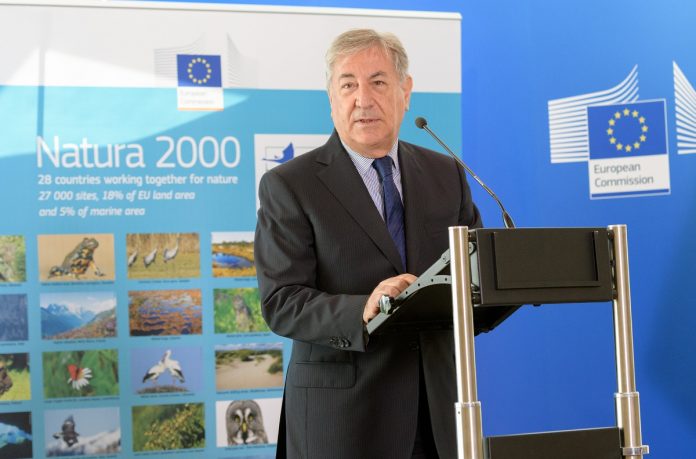Karmenu Vella, EU Commissioner for Environment, Maritime Affairs and Fisheries details how protecting nature, people and the economy is a priority in Europe
Protecting nature has always been a hot-button issue in the United Kingdom. So it came as no surprise, when I was asked to review the state of EU nature legislation, to see massive support emanating from the UK. More than 105,000 people, the second-highest turnout in the EU, replied to the Fitness Check consultation, with an enormous majority supporting the existing framework.
That framework has been in place for 25 years, with the Birds and Habitats Directives combining to form the Natura 2000 network, the largest coordinated network of biodiversity-rich protected areas in the world.
You may ask what is Natura 2000? Well instead of that name, think of the most iconic nature spot in your country or region. You can be almost 100% sure that it is a designated Natura 2000 site. If you are not sure, you can even check on our own Natura 2000 viewer.
This vast network is something the EU can be proud of, but there is no doubt that it could perform much better. Our comprehensive review showed that while the principles are sound and the goals are still valid, we need real change on the ground. Protecting the ecosystems of today requires a more modern approach, more suited to the 21st century. That’s the idea behind the new Action Plan – ensuring that the Directives fully deliver their potential, with a triple benefit for nature, for citizens, and for the EU economy.
The improvements will centre around managing protected areas more efficiently, improving the connections between nature protection and socio-economic activities, and engaging more closely with young people, stakeholders, and national authorities.
Protecting nature starts with improving knowledge
It starts with improving guidance and knowledge. We will begin by promoting smarter participatory approaches that strive to involve landowners and users in the implementation process. We will also develop on-site permit procedures, species protection and new guidance on topics like wind energy, hydropower and aquaculture. The Action Plan will explore ways to integrate ecosystem services into the heart of decision-making processes. Better public access to data necessary for implementing the Directives (like satellite imagery from the Copernicus programme) will also help.
A second priority is to build political ownership and strengthen compliance. This isn’t just about the UK, it’s about encouraging all Member States to take ownership of the network, and to ensure that the necessary conservation measures are in place for all Natura 2000 sites. We want stronger collaboration with national and regional authorities, landowners, civil society and other stakeholders, as this is the best way to safeguard local biodiversity and encourage economic activities in harmony with nature protection.
We also need more investment in Natura 2000 and more efficient uptake of EU funding. Over the next 3 years of the LIFE programme, the Commission is proposing to allocate an additional €60 million to Natura 2000 and biodiversity projects. Apart from that measure, our goal is to stimulate and encourage private investment in nature projects Natural Capital Financing Facility, a financing partnership between the Commission and the European Investment Bank providing tailored loans and investments.
The last priority is communication. The Natura 2000 network covers a million square kilometres, but a large majority of citizens have never heard of it. That needs to be remedied. So we are stepping up outreach activities, supporting knowledge exchange through a joint platform with the Committee of the Regions, and involving young people through initiatives like the European Solidarity Corps volunteering programme. We have also proclaimed 21 May as the European Natura 2000 Day in order to raise awareness around Europe.
The success of the Plan will depend on building a strong culture of collaboration and trust. That means reaching out to citizens, local, regional and national authorities, to industry, business and civil society. This Action Plan isn’t about fencing off nature. Quite the opposite – it’s about finding ways to live in harmony with nature, where society and industry continue to develop, but while treading more softly on the Earth. You can sum it up with one simple thought – the only sustainable path to a more competitive economy is the one that embraces the protection of nature. In 2017, I can’t think of a better path.
Karmenu Vella
Commissioner for Environment, Maritime Affairs and Fisheries
European Commission
https://ec.europa.eu/commission/commissioners/2014-2019/vella_en











